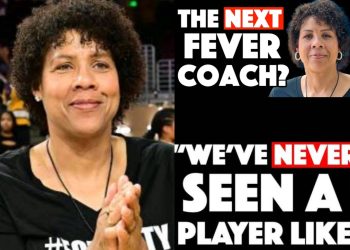Indiana Pacers star Tyrese Haliburton is quickly becoming one of the NBA’s most electrifying young players—not just for his dazzling playmaking and clutch performances, but also for the signature celebration that has become a defining image of his rise. But in a recent sit-down interview with Hall of Famer and Pacers legend Reggie Miller, Haliburton revealed that the celebration, while beloved by fans, carries a surprising amount of pressure.
For those who follow the league closely, Haliburton’s celebration—arms stretched in a confident shrug, often paired with a fiery yell or smile—has become emblematic of his swagger and passion for the game. It typically follows a big shot, a no-look assist, or a critical moment in the fourth quarter. But as he explained to Miller during their candid conversation, the celebration has evolved into something bigger than just a personal expression of joy or adrenaline.
“When I first did it, it was just in the moment. It was just me having fun,” Haliburton told Miller. “But now, people expect it. They look for it. And if I don’t do it, it’s like something’s missing. That’s a lot of pressure, man.”
Haliburton admitted that while the celebration was originally spontaneous, it has grown into a symbol that fans, teammates, and even the media associate with his identity on the court. With each big game, the anticipation surrounding the move builds—and with it, expectations.
“There are nights when I don’t feel like celebrating,” he said. “Maybe I’m tired, maybe I’m not having my best game, or maybe the moment doesn’t feel right. But I’ll hear fans calling for it. Like, ‘C’mon Tyrese, hit us with the celebration!’ It’s love, I get that. But sometimes it feels like I have to put on a show even when I’m not feeling it.”
Miller, who was no stranger to theatrics during his own storied career, empathized with the young guard. He recalled the pressure that came with his own gestures and iconic trash talk during rivalry games with the Knicks and others. “People don’t realize it’s not always easy to flip that switch,” Miller said. “When the world sees you a certain way, they expect that version of you every time, even when you’re just trying to get through a tough night.”
For Haliburton, the celebration has become both a brand and a burden. As his profile rises—thanks in part to his All-Star-level play and Indiana’s postseason resurgence—the scrutiny and spotlight only grow more intense. And while he embraces the love and support from fans, he’s also learning to balance the demands of performance with authenticity.
“I’m not a performer in the sense that I’m putting on an act,” Haliburton explained. “What people see is real. But I also want to protect my peace. I don’t want to feel like I have to be a character every night.”
Despite the weight the celebration now carries, Haliburton remains grounded and grateful. He emphasized that the gesture still holds personal meaning, especially when it comes in moments of genuine emotion—like a game-winner or a playoff run.
“Those are the moments where it feels right, where I’m just lost in the game,” he said. “And that’s when the celebration really means something.”
The conversation with Miller offered fans a rare window into the emotional complexity behind what might seem like a simple act. It highlighted the often-overlooked psychological aspects of modern sports fame—where athletes must navigate branding, public perception, and personal well-being in equal measure.
As the Pacers continue their rise and Haliburton cements his place among the league’s elite, it’s clear that his celebration—like his game—will evolve. Whether or not he breaks it out every night, the passion and authenticity behind it remain unchanged.
“People love it, and I love that they love it,” Haliburton said. “But I always want it to come from the heart. That’s what makes it real.”
In the world of sports, where image can become inseparable from identity, Haliburton’s reflections are a reminder that even the most joyous expressions on the court can carry hidden weight. And as he continues to mature as a player and person, it’s clear he’s thinking just as deeply about what he represents off the court as he is about the next big play.











